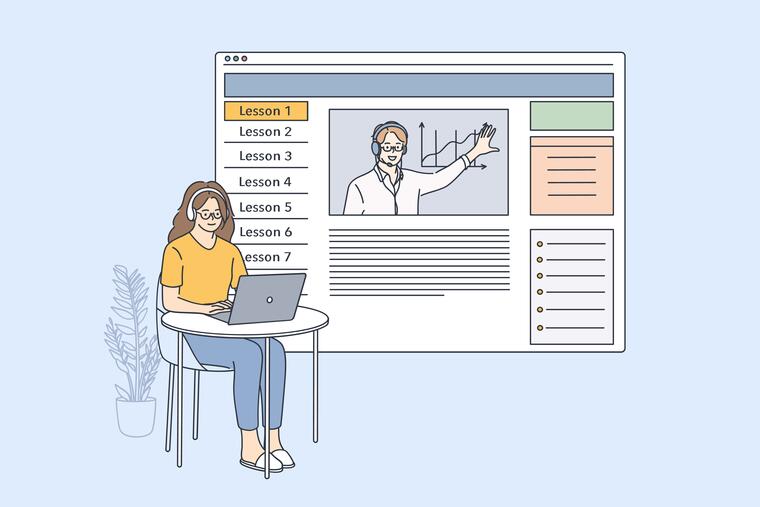Online study programmes entrust much of the work of learning to your students. Since online students do not meet each other face to face and have less contact with their teachers and fellow students than they would during standard campus-based courses, coursework for these students should be planned in more detail than for campus-based programmes.
Plan your content in time and space
As a teacher, you have a responsibility to facilitate the learning process. You achieve this by promoting collaboration and creating clear and secure arenas for subject-related tutorials and discussion.
As an online teacher, you have to know how to achieve this online. You must decide what activities should be carried out synchronously and/or asynchronously online and/or during student gatherings. You have to consider the content and learning resources that are best suited to these different arenas, and whether your students are working alone, in small groups, or as a collective together with you, their teacher.
The specific characteristics of your subject will contribute towards determining how your teaching is organised. For example, practical subjects or studies that depend on collective student gatherings will mean that the teaching of theory takes place either asynchronously or synchronously online, enabling practicals to take place during the collective gatherings.
Make sure that your students work well together
When you teach online it is important that you are able to facilitate effective communication and collaboration among your students. Today, different technologies offer us many ways of achieving both synchronous and asynchronous work and discussion in groups. Synchronous technologies promoting collaboration include:
- Zoom
- OneNote
- Google Docs
Asynchronous technologies include:
- A shared Canvas page, discussion threads, modules, etc.
- Blog
- Padlet
As an online teacher, you should be facilitating meetings between your students, either by dividing them up into colloquial groups, or by booking fixed sessions on Zoom. Canvas also enables you to divide your students into groups for activities such as working together on modules or for discussions, etc. By facilitating collaboration between your students in this way, they will establish a mutual collegial relationship even though they aren’t able to meet face to face on campus.
Make sure that you communicate clearly and predictably with your students
Online study programmes require clear and predictable communication between teachers and their students. Your students must be able to know when you or a course tutor are available, and how you can both be contacted. Some will choose to communicate via Canvas, while others will use e-mail or other channels.
You should use a consistent set of channels when providing information to your students. This will ensure that there is no doubt that the information is being read. Some teachers find it useful to make a list of important dates on the subject’s front page in Canvas. We also recommend that subjects in the Canvas system should have a logical structure, preferably created in consultation with staff teaching the same subject. You should make it your aim to ensure that your students have a good overview of the subject syllabus, learning resources and learning outcomes without them having to spend a lot of time searching for these things themselves.
Course design: building your online study programme
The following video contains tips on how to design your online study programme, and offers advice on the following:
- How to assess the relationship between your students, their learning outcomes and ways of working
- The tools that you can use at different stages in the process.
- Examples of Canvas rooms for online teaching.
This video is in Norwegian, but English subtitles will soon be added.
Resources
- A guide to quality online teaching (Flexible Education Norway - FUN)
- A guide for online teachers - in Norwegian (pdf)
